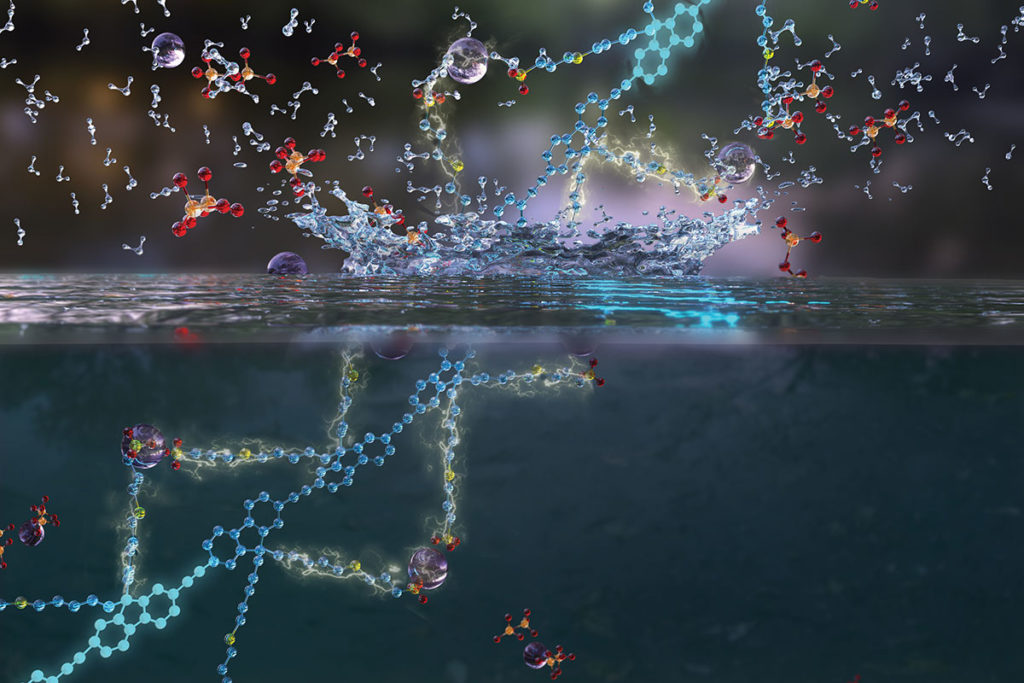Chemical Sensing
Conjugated polymers (CPs) afford a variety of opportunities to couple analyte-receptor interactions, as well as nonspecific interactions, into transducible responses. Key advantages of CP based sensors include the potential to exhibit collective properties that are sensitive to minor perturbations and the ability to tailor the response to various analytes through straightforward synthetic means. CPs can simultaneously function as molecular recognition and signal transduction elements and display unique signal amplification when compared to small molecules, leading to orders of magnitude improvements in sensitivity.
Unlike small molecules, CPs transduce signals through exciton migration, and are relatively immune to electrostatic and dielectric variations allowing their successful implementation for sensing applications within complex aqueous environments. Binding events along the polymer capture the diffusing exciton resulting in the collective response of each repeat unit within the exciton diffusion length.

The exciton diffusion process and correlated optical response are closely related to the electronic and structural conformation of the polymer backbone, which can be synthetically tuned to incorporate molecular design features that enhance intra- and intermolecular exciton delocalization leading to stronger amplified signals. This hallmark signal amplification, coupled with the ability to tailor the optical response to various analytes, has enabled us to develop selective and sensitive CP-based sensors.
New markets are continually being enabled from opportunities for low-cost printing of full-feature electronics, and from electronic devices integrated into novel systems or form factors. We also develop soft-matter, compact, and robust electronic sensor technologies critical to environmental challenges such as the issue of hypoxia and eutrophication in the Mississippi Sound.
